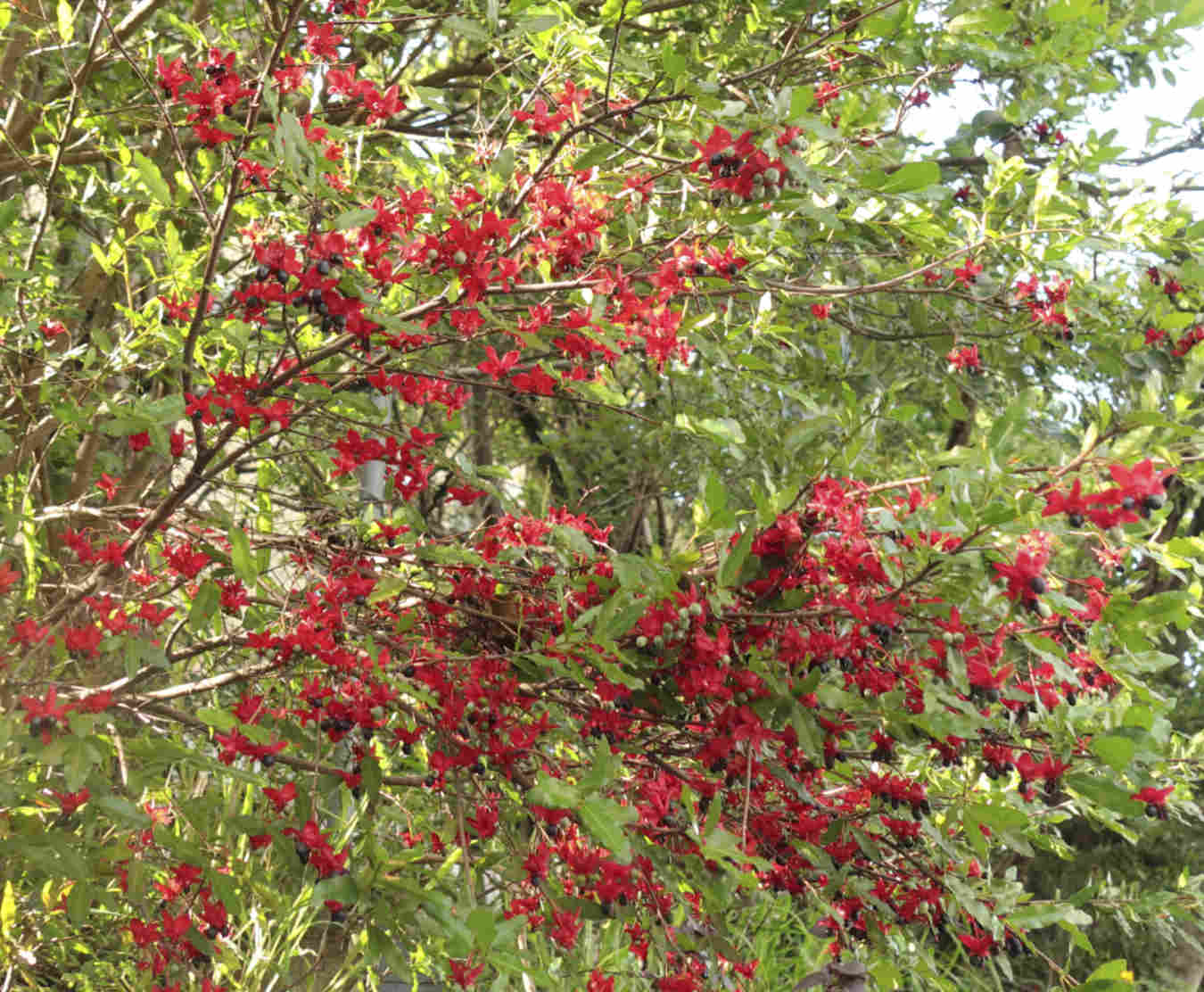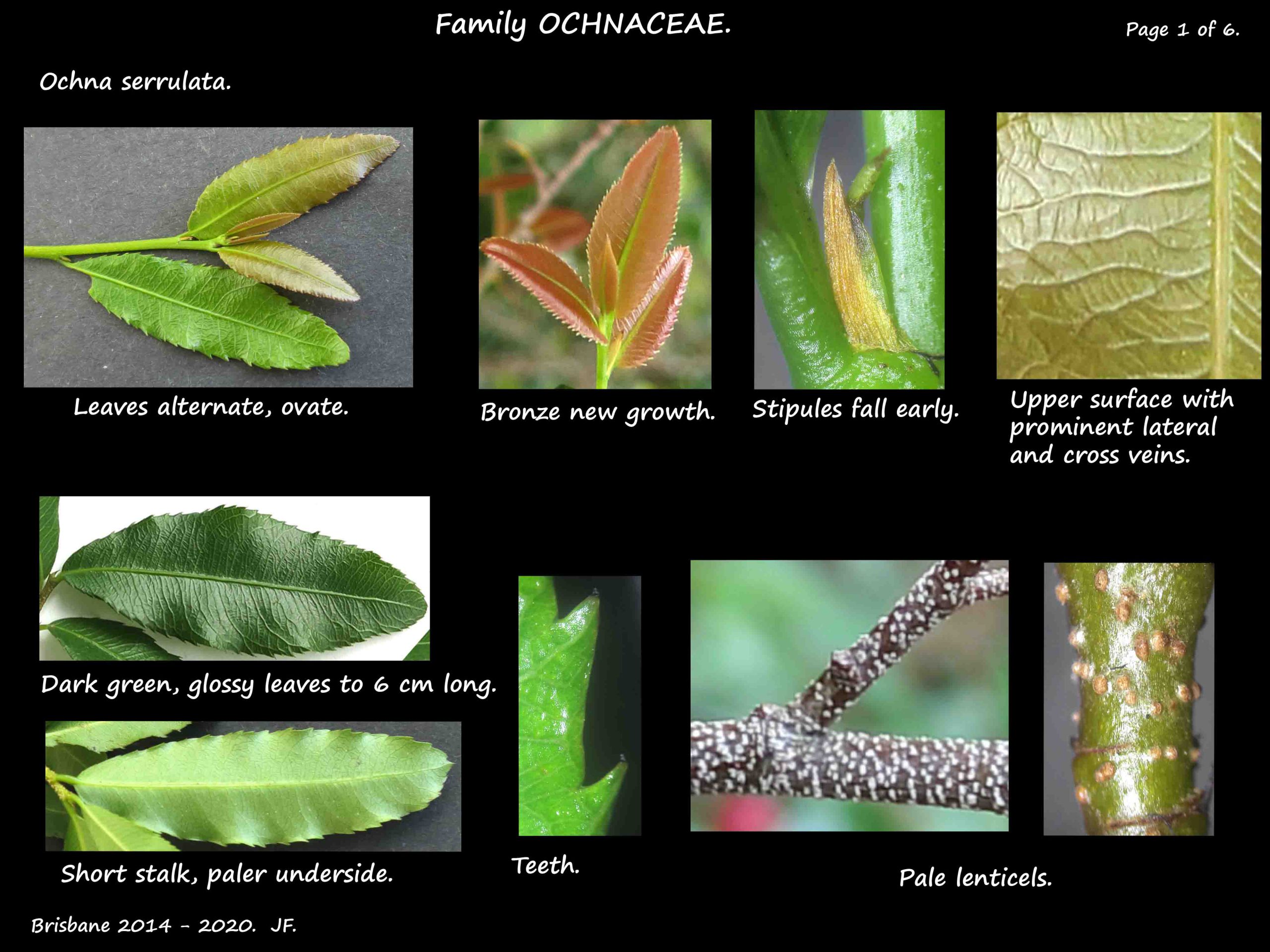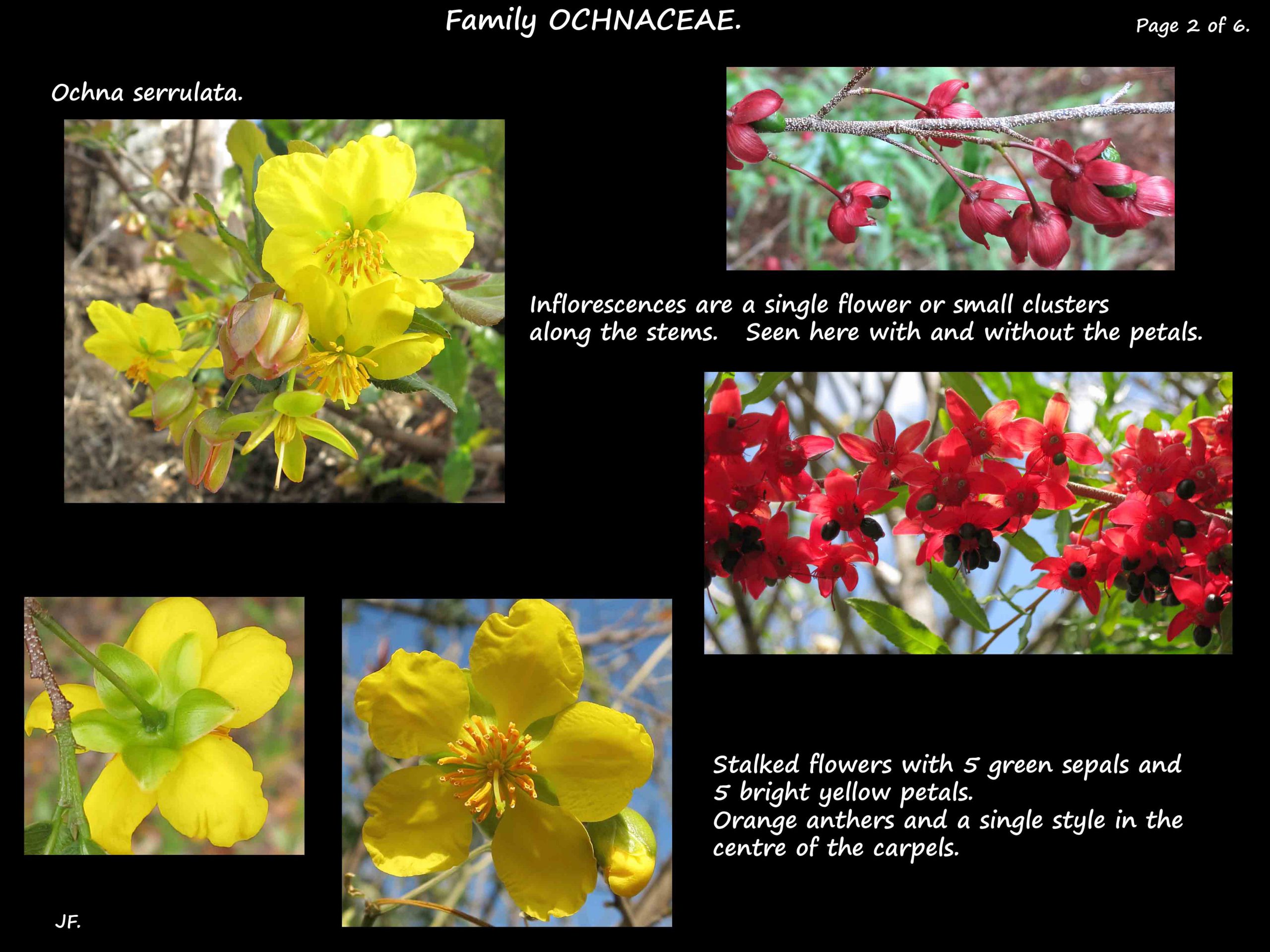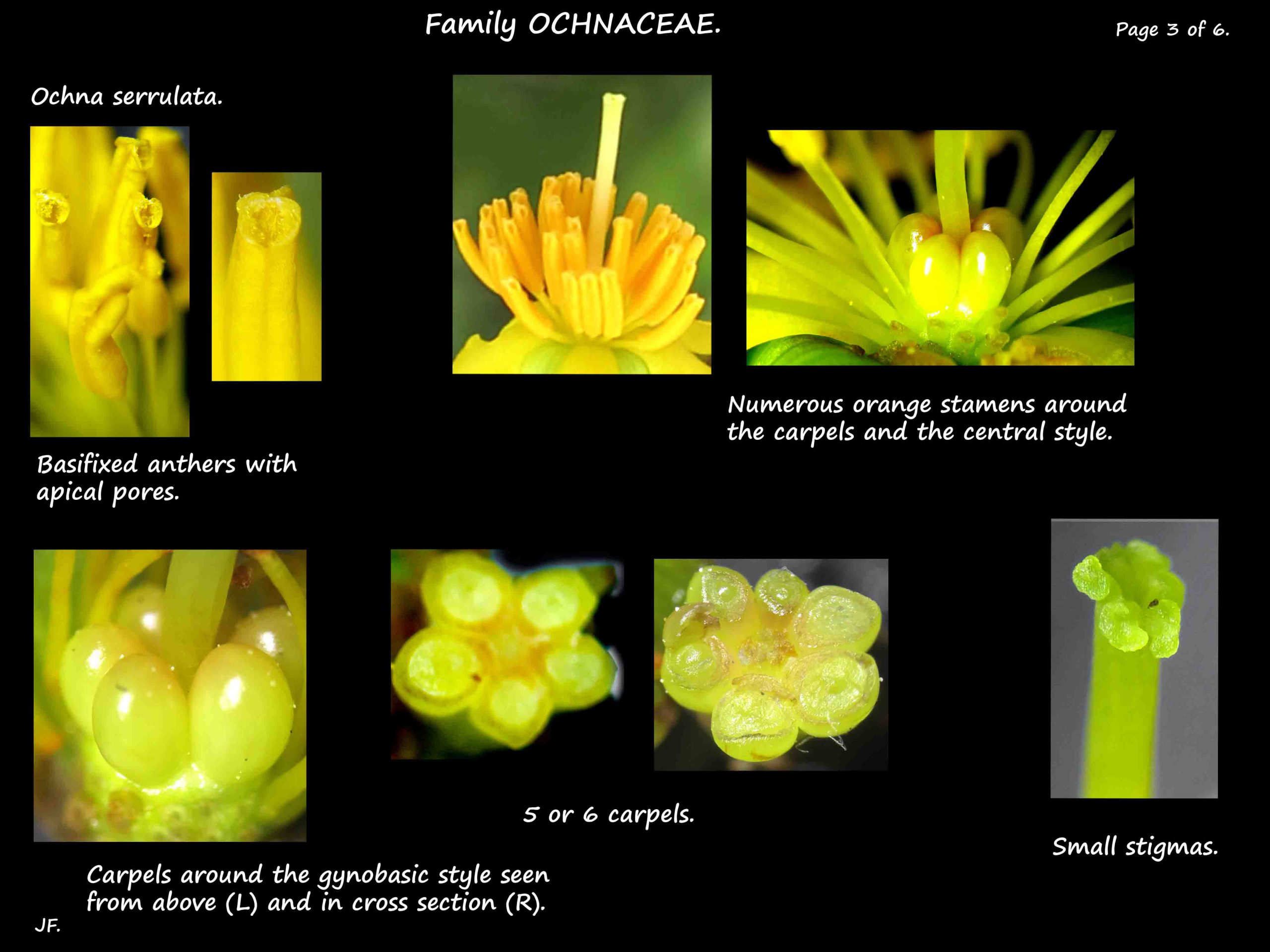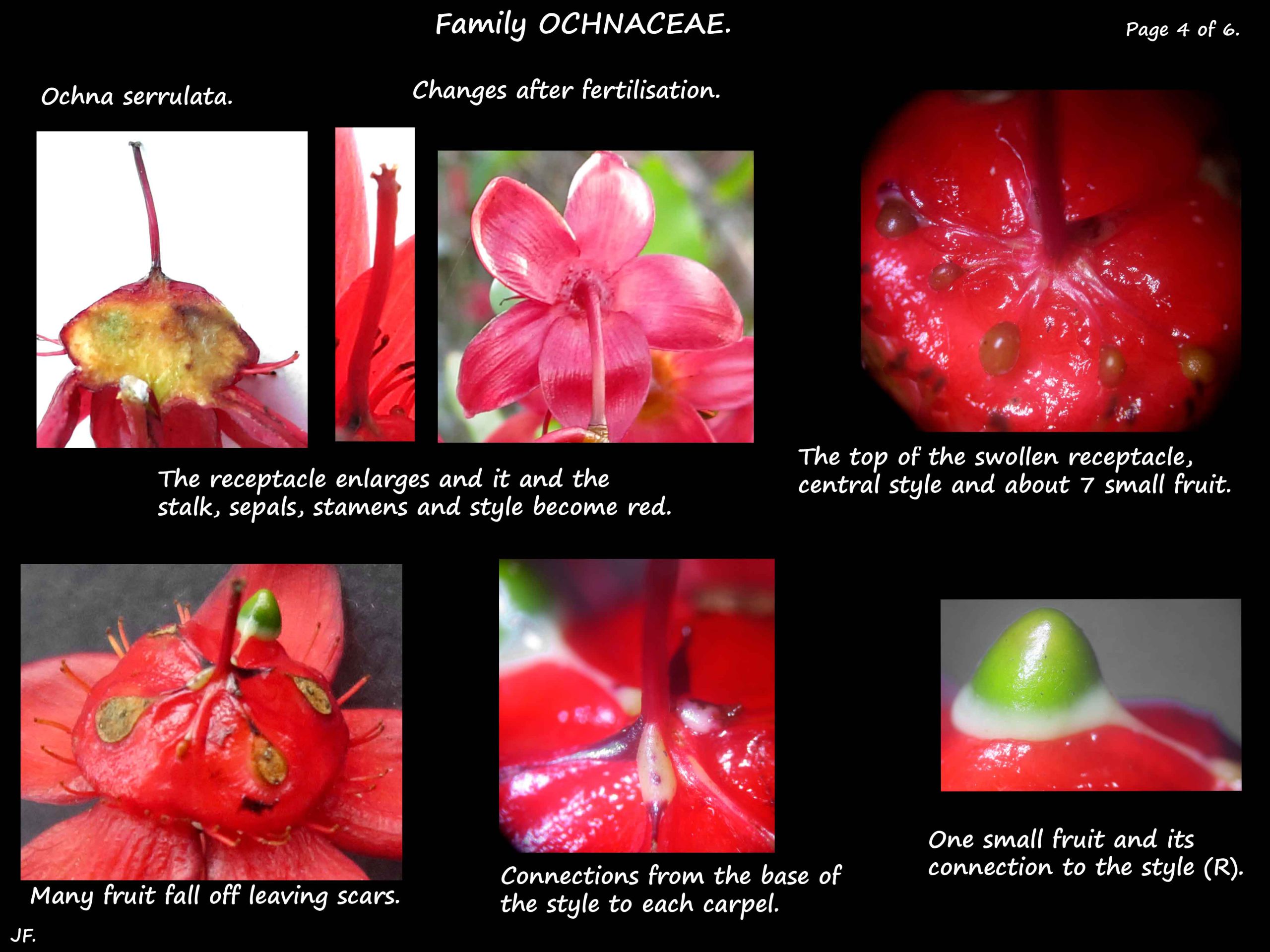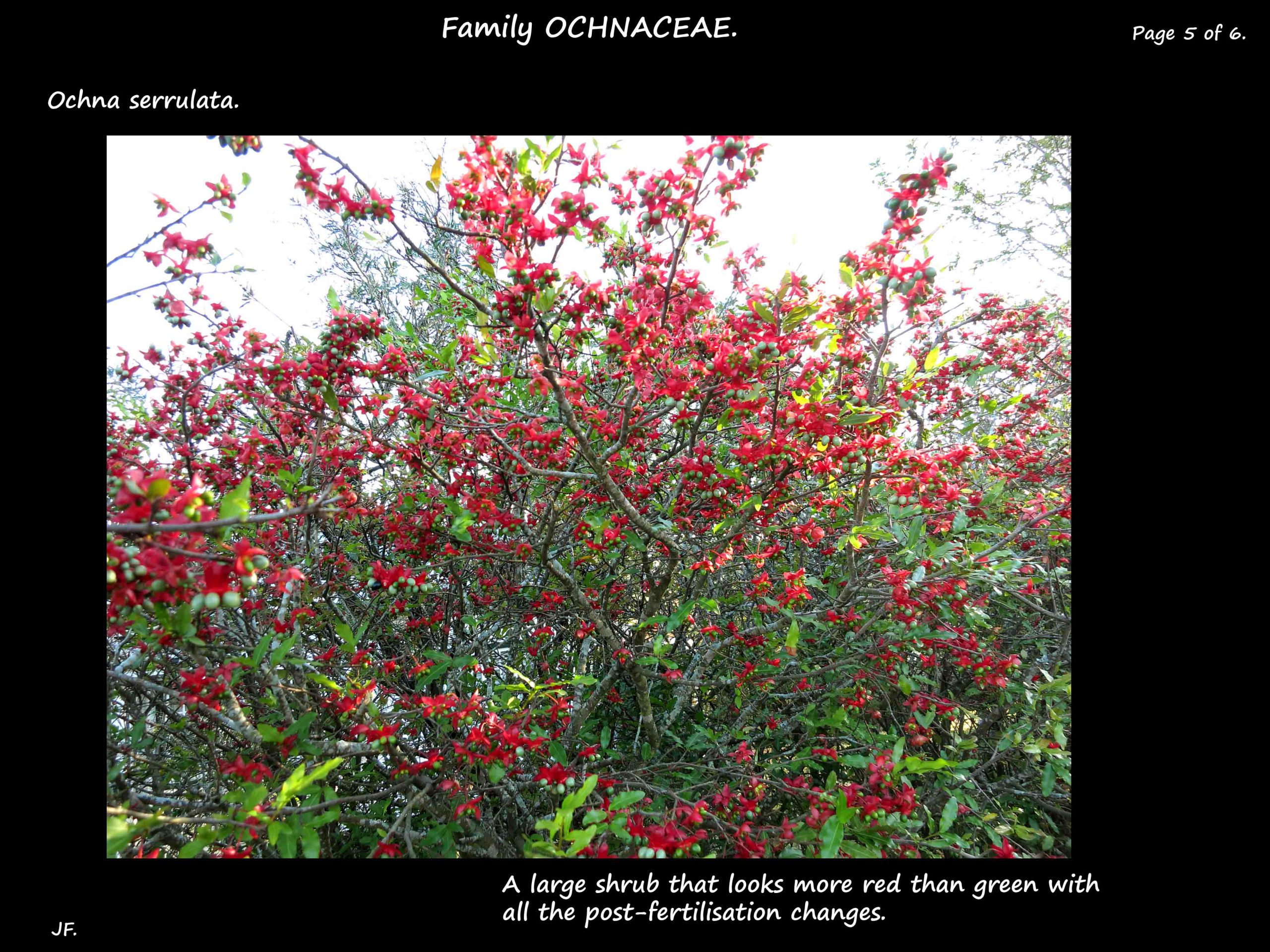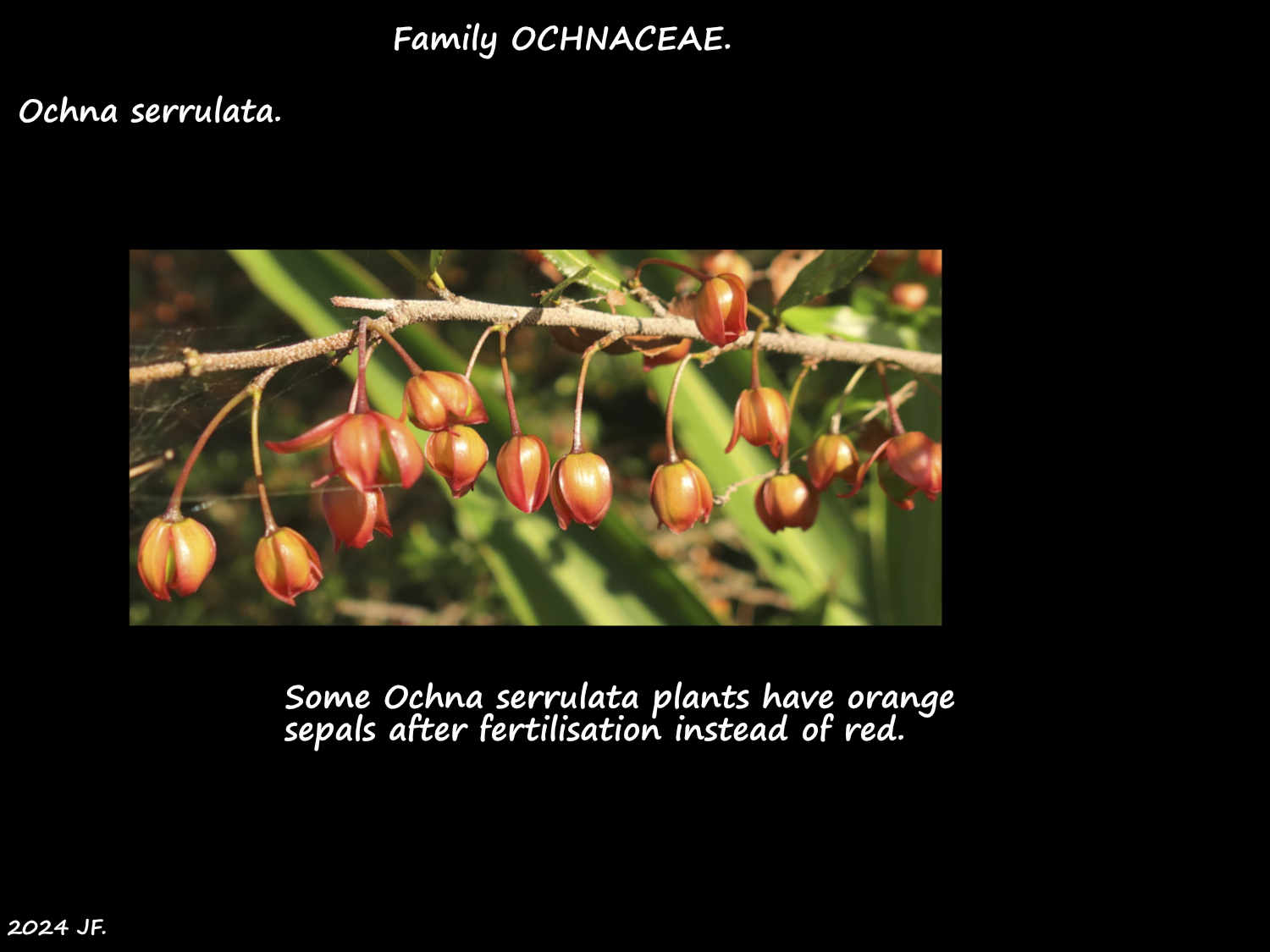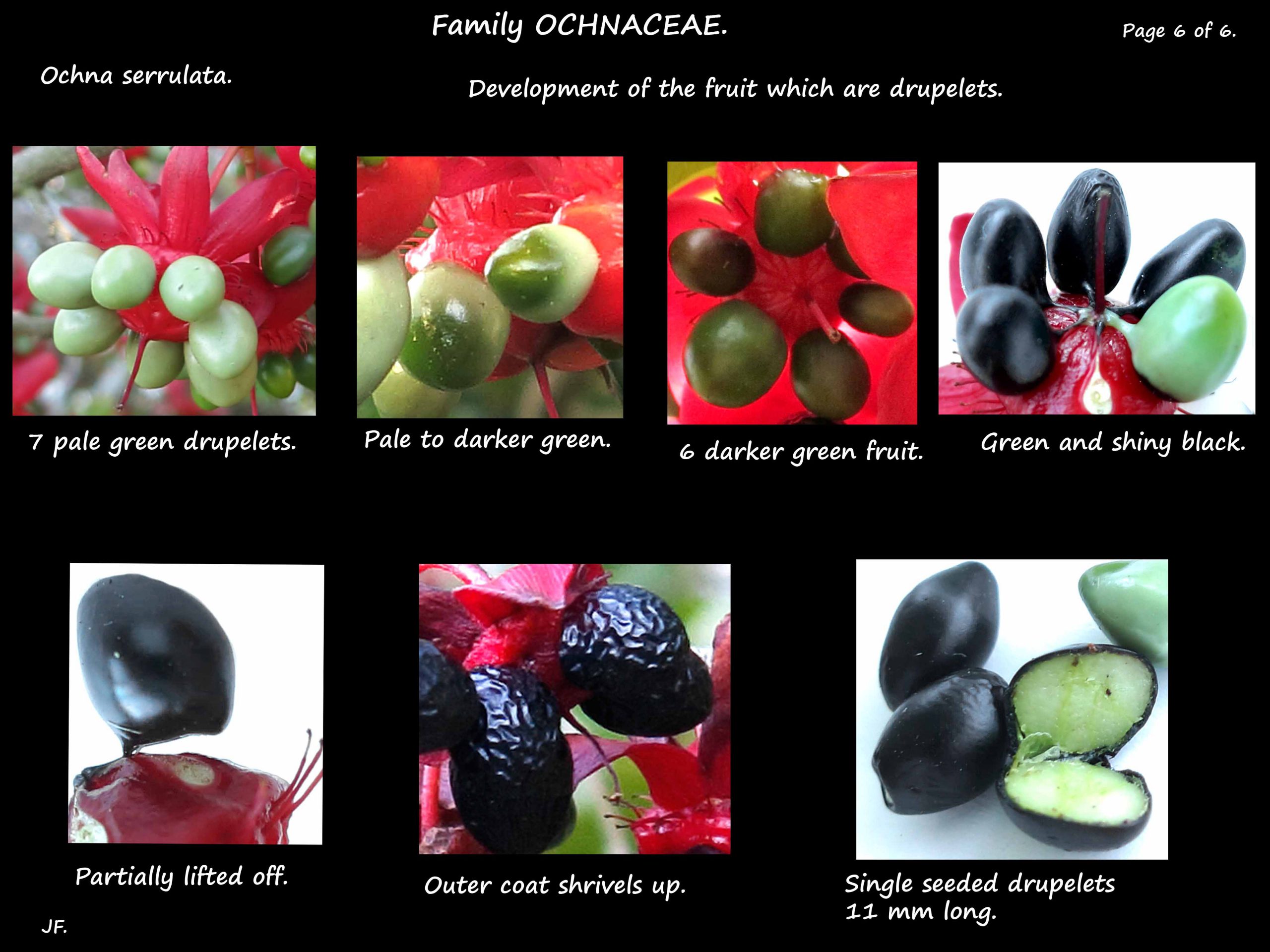Ochna serrulata.
Widely naturalised in S. E. Queensland it is now a weed.
It is one of the species known as the Mickey Mouse plant.
Mostly seen as a shrub 1 to 3 m high it can become a small tree up to 6 m.
Young branches are green and older woody ones are brown or reddish.
They are covered with many small pale nodules or lenticels.
The leaves are evergreen and alternately arranged.
Their stalks are a few mms up to 13 mm long and there are small stipules at the base.
Young leaves often have a bronze tint and the adult ones are dark green with a paler underside.
Leaves are elliptic and up to 5 or 6 cm long.
The surface is smooth and glossy and the edges are markedly toothed (serrated).
Leaves are pinnately veined and the multiple laterals have many cross veins between them.
Veins are prominent on the upper surface.
Inflorescences can be single flowers or small clusters.
On stalks 1 to 2 cm long there can be many of them along the stems.
Bisexual flowers, 2 – 3 cm wide, have 5 bright yellow petals.
Initially the 5 green sepals are about 6 mm long.
There are numerous orange-yellow stamens whose anthers open via apical pores.
The ovary consists of 5 (6 or more) carpels.
The single, pale style arises from a depression between the carpels (gynobasic).
The style is topped by the small stigmas.
A number of changes occur after fertilisation:
- the petals fall off,
- the sepals enlarge and become bright red,
- the receptacle enlarges and becomes bright red
- the stamens become red
- the carpels develops into fruit.
As the receptacle enlarges the carpels are separated and end up in a ring on the sides of the receptacle.
Each carpel develops into a small 6 to 8 mm long fruit.
Usually some fall off leaving pale scars on the receptacle.
Those that remain change from a pale to a darker green then a shiny black.
Each is a drupelet containing a single seed.
Plants can flower for much of the year so can have flowers and fruit as the same time.
A similar Ochna found in Australia is Ochna kirkii, also known as the Mickey Mouse plant.
It is a larger plant with larger rounder leaves (5 to 10 cm long) and larger flowers (3.5 to 5 cm wide).
The leaf edges are smooth apart from hairs or bristles and they roll under slightly.
There are fewer side veins and cross veins.
J.F.
